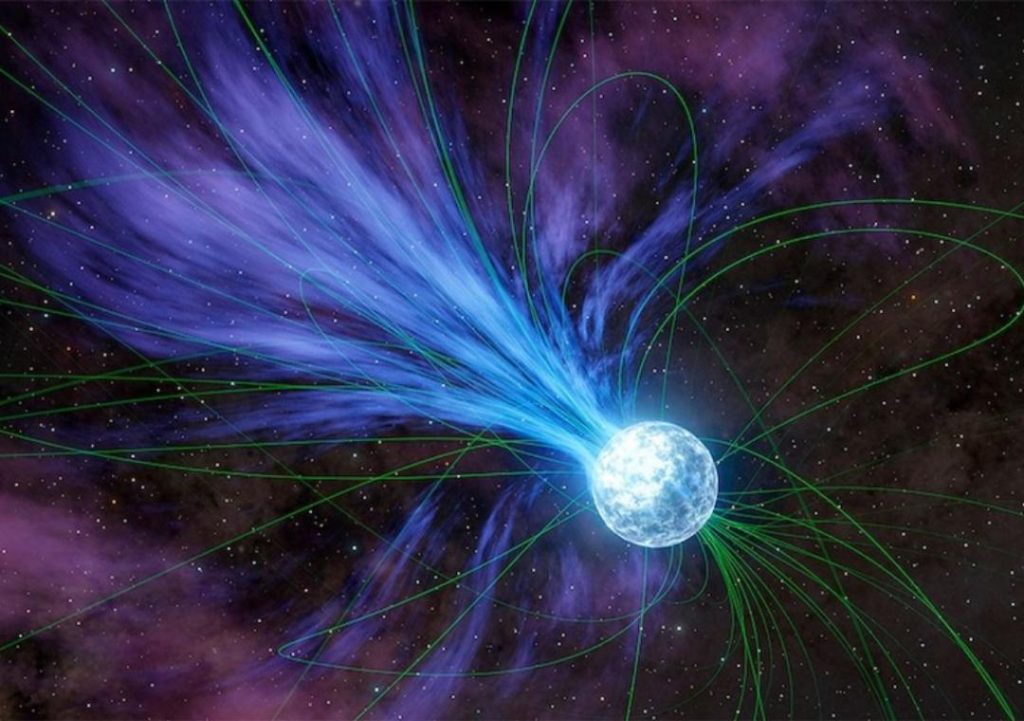
Gold & Platinum Created through Neutron Stars’ Explosions: Study
For centuries, humanity has been fascinated by the origins of precious metals like gold and platinum. Where did these valuable resources come from? Scientists have long debated the answer, but a recent study led by Columbia University student Anirudh Patel has finally shed some light on the matter. According to the study, magnetars, or highly magnetized neutron stars, played a crucial role in creating these elements in a cosmic event over 20 years ago.
Magnetars are a type of neutron star, which is the incredibly dense remains of a massive star that has undergone a supernova explosion. These stars are known for their extremely strong magnetic fields, which can be trillions of times stronger than the Earth’s magnetic field. When a magnetar explodes, it releases a massive amount of energy in the form of flares that can be detected from millions of light-years away.
The study, published in the journal Science, suggests that one of these magnetar explosions occurred in the Milky Way galaxy approximately 20 years ago. During this event, the magnetar released a massive amount of energy that was rich in heavy elements, including gold and platinum. These elements were forged in the intense heat and pressure of the exploding star, and were then released into space.
The study’s findings are significant because they provide a new understanding of how these precious metals were created. For centuries, scientists believed that gold and platinum were formed through a process known as nucleosynthesis, which occurs when heavy elements are created in the hearts of stars. However, this process is relatively slow and doesn’t account for the rapid formation of these elements.
The explosion of a magnetar provides a much faster and more efficient way to create heavy elements like gold and platinum. The intense heat and pressure of the explosion create a perfect environment for these elements to form, and the flares released by the magnetar can travel vast distances through space, seeding other stars and planets with these precious metals.
The study’s findings also have implications for our understanding of the origins of the elements. For centuries, scientists believed that the elements were formed in a specific order, with lighter elements forming first and heavier elements forming later. However, the discovery of magnetars and their role in creating heavy elements challenges this understanding.
“We’re seeing that the universe is more dynamic and complex than we thought,” said Patel, the study’s lead author. “The formation of elements is not a straightforward process, and magnetars are an important part of that process.”
The study’s findings also have implications for the search for extraterrestrial life. The presence of gold and platinum in the universe is a key factor in the search for life beyond Earth, as these elements are essential for the formation of planets and the development of life.
The study’s findings are also significant because they provide a new understanding of the universe’s history. By studying the explosions of magnetars, scientists can gain a better understanding of the universe’s evolution and the formation of the elements.
The study’s findings are also significant because they provide a new understanding of the universe’s history. By studying the explosions of magnetars, scientists can gain a better understanding of the universe’s evolution and the formation of the elements.
In conclusion, the study led by Columbia University student Anirudh Patel has shed new light on the origins of gold and platinum. The explosion of a magnetar in the Milky Way galaxy approximately 20 years ago created these precious metals through the intense heat and pressure of the explosion. The study’s findings have significant implications for our understanding of the universe’s history, the formation of elements, and the search for extraterrestrial life.






